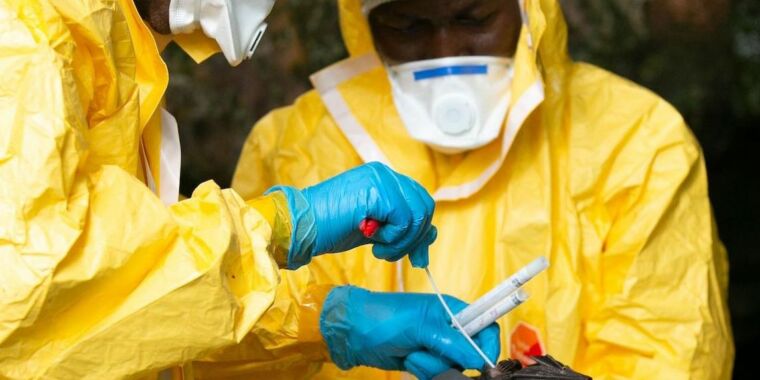
We didn’t know about the SARS-CoV-2 virus until it appeared in humans. But previous experience with other coronaviruses that spread in humans (SARS and MERS) told us that something like COVID-19 could pose a risk. Coronaviruses are prevalent in several species that have frequent contact with humans and have a clear history of being able to adapt to human cells.
Being aware of viruses with similar properties can help us recognize threats from future pandemics. Now, researchers are getting the results of a massive virus search and releasing a public database of hundreds of viruses, all assessed for the risk that viruses pose to humans. And any viruses that we discover can be connected to the framework they have developed so that we can get quick information on whether they are threatening.
What’s there?
The effort came out of a USAID-sponsored program called PREDICT, which was part of a set of efforts focused on zoonotic diseases, those that can cross species barriers and infect humans. Collectively, the PREDICT project did a massive search for animal viruses, using more than half a million individual samples taken from 75,000 animals. With this data, the project identified more than 700 new viruses and another that had never been seen in the animal in which it was found.
By itself, knowing the sequence of the virus genome does not tell us much about the risk that viruses pose to humans. We can find out what proteins viruses code for, but we are not in the place where we can look at those proteins and find out if they make the virus more likely to infect humans. In addition, it is not just infectivity that poses a risk. If the virus normally circulates in rare animals that avoid humans, the chances of it reaching us are slim.
The factors abound, as well as the disagreement among experts about the importance of these factors. So figuring out how to evaluate these new viruses was a challenge.
To find out what is important, the researchers asked 150 virology and public health experts to consider 50 different potential risk factors, from the host species that carried it to where it was found to its evolutionary relationships with known viruses. The experts were asked to rate the importance of each of these risk factors, and the PREDICT team weighed each of their ratings based on the person’s experience in each issue. (So, for example, a virologist’s opinion may rely less on issues related to how often your host animal interacts with humans.)
Some of the important risk factors that were assessed with high consistency were obvious: frequency of interactions with humans and our livestock, ability to infect a variety of hosts and modes of transmission. But not all factors were rated as very significant, and seven of those assessed were rated as important. But we simply don’t have enough data on most viruses to make it possible to evaluate them.
Scoring Spillover
The net result is an overflow score, the best estimate of the risk that each of these viruses poses to humans, strangely rated at a score of 1 to 155 (this is what happens when you start with 50 factors scored from 1 to 5 , weigh them in varying degrees, then throw some of them away). As a validity test, the researchers analyzed the viruses with the highest scores; all of the first twelve were already known to have infected humans.
SARS-CoV-2 is classified between two viruses that have caused several outbreaks of hemorrhagic fever in Africa: Lassa and Ebola. It didn’t come out on top because these other viruses caused several outbreaks (SARS-CoV-2 had only one, but it was worth it). We also know a lot more about its normal hosts, although we did not identify the species SARS-CoV-2 was in before it turned into humans.
All analyzes are being made available on the Spillover website, which includes a classification list of all viruses analyzed so far. A quick overview of each divides the risk into three categories (based on the host you are in, the environment of that host and the genetics of the virus). A detailed view shows each individual factor that we have enough data to assess.
In addition to making data on these new viruses available, Spillover is also a flexible sharing platform. Flexible, as as we learn more about what makes a virus a zoonotic threat, researchers promise to update the analysis of all viruses in the database. And share, because the PREDICT team expects the research community to add new viruses to be evaluated as they are discovered. It is possible to create a risk score with only half a dozen viral properties.
While so many new viruses are a great start, there are some obvious limitations. On the one hand, because they are already being monitored intensively, researchers do not add influenza viruses to their database. Second, although it represents a lot of work, the hundreds of viruses described here are a drop in the ocean, compared to the nearly 1.7 million viruses that infect mammals and birds. We have much more work to do if we really want to prevent the next pandemic from approaching us.
Still, the project represents a valuable start. Several of the viruses that have not been described before are classified as more threatening than the viruses that we already know can reach humans. Obviously, directing those to more careful study and surveillance has the potential for significant returns, especially when compared to the global costs of the COVID-19 pandemic.
PNAS, 2021. DOI: 10.1073 / pnas.2002324118 (About DOIs).
